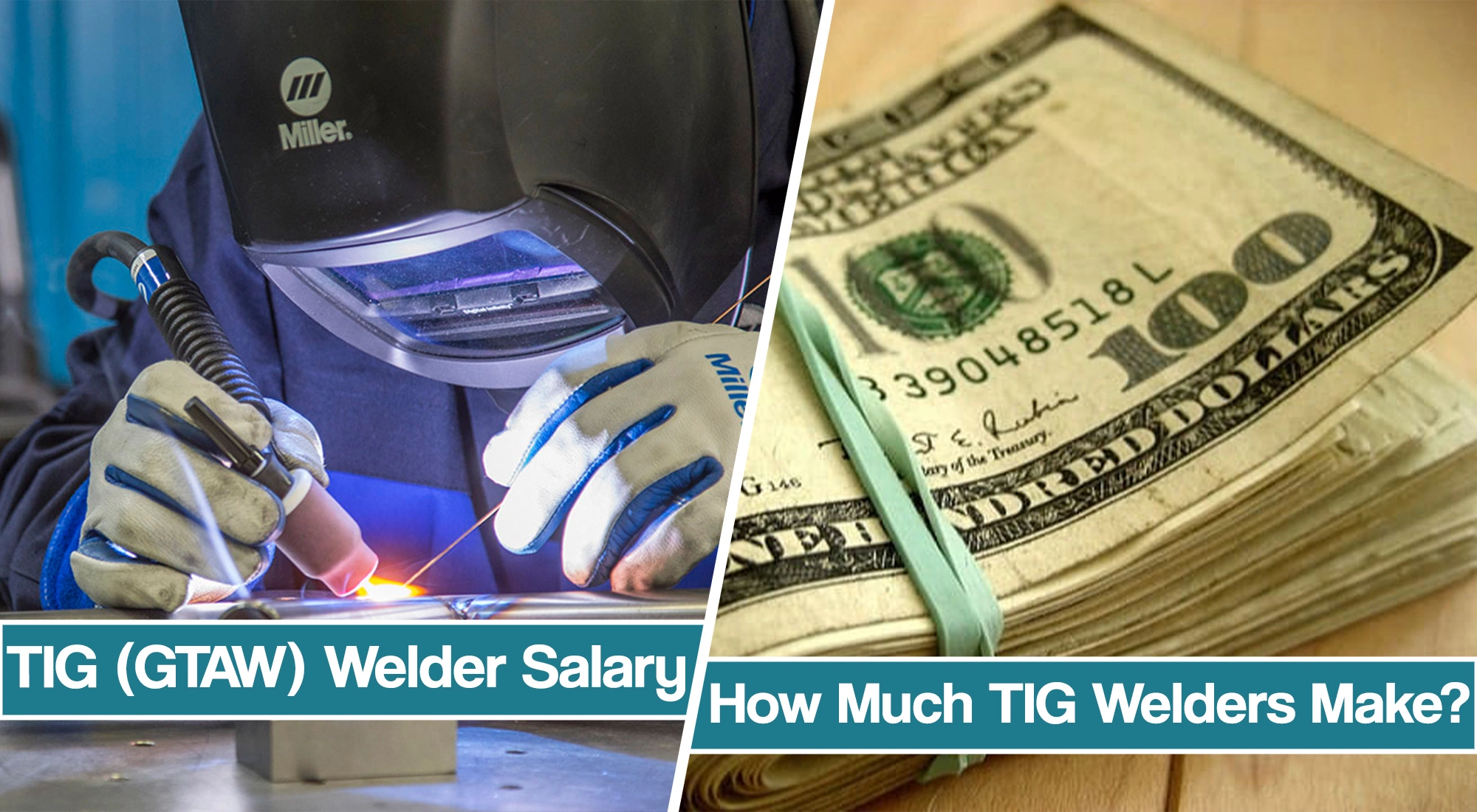Yes, TIG welding can make money. It is particularly profitable in specialized industries like aerospace and automotive, where precision welding is required. With an investment in quality equipment and skilled labor, TIG welding businesses can offer lucrative services such as custom fabrication, repair work, and specialized welding projects, generating substantial income.

TIG Welding vs Other Welding Methods
TIG Welding
Introduction
TIG (Tungsten Inert Gas) Welding, also known as GTAW (Gas Tungsten Arc Welding), is a process that uses a non-consumable tungsten electrode to produce the weld. It’s known for its precision and the purity of the weld joint.
Advantages of TIG Welding
- Precision: TIG welding offers a high degree of precision. It is often used in applications where fine and delicate work is required.
- Quality: The quality of the welds is often superior, with a clean and smooth appearance.
- Material Versatility: It can be used on a wide variety of materials, including stainless steel, aluminum, and more.
Disadvantages of TIG Welding
- Cost: The cost of TIG welding can be relatively high, especially in terms of equipment and labor. A typical TIG welder can range from $1,500 to $5,000.
- Speed: The process is generally slower compared to other methods, especially for thicker materials.
Parameters and Specifications
- Power Requirements: Generally, 10-50 amps for thin materials, up to 200-300 amps for thicker materials.
- Material Thickness Range: 0.5mm to around 10mm.
- Life Span of Equipment: Approximately 5-10 years, depending on usage and maintenance.
MIG Welding
Introduction
MIG (Metal Inert Gas) Welding, or GMAW (Gas Metal Arc Welding), is a welding process in which an electric arc forms between a consumable wire electrode and the workpiece metal(s), which heats the workpiece metal(s), causing them to melt and join.
Advantages of MIG Welding
- Speed: MIG welding is typically faster, especially for larger projects.
- Ease of Use: It’s generally considered easier to learn compared to TIG welding.
Disadvantages of MIG Welding
- Quality: While fast, the appearance and quality of the weld might not be as refined as TIG welding.
Parameters and Specifications
- Power Requirements: Usually 30-400 amps.
- Material Thickness Range: Generally suitable for materials over 0.8mm.
- Cost of Equipment: Ranges from $500 to $2,000.
Stick Welding
Introduction
Stick welding, or SMAW (Shielded Metal Arc Welding), is a manual arc welding process that uses a consumable electrode covered with a flux to lay the weld.
Advantages of Stick Welding
- Versatility: Suitable for outdoor use and on rusty or dirty materials.
- Low Cost: Generally, equipment costs can be as low as $300.

Disadvantages of Stick Welding
- Skill Requirement: Requires more skill and practice to master compared to MIG.
- Appearance: The welds may not be as clean or aesthetically pleasing as TIG welds.
Parameters and Specifications
- Power Requirements: Typically 20-400 amps.
- Material Thickness Range: Suitable for materials over 1.5mm.
Cost-Effectiveness Analysis
Here is a comparison table of the three methods considering factors like cost, speed, quality, and material compatibility:
| Welding Method | Cost of Equipment | Speed | Quality | Material Compatibility |
|---|---|---|---|---|
| TIG | $1,500 – $5,000 | Slow | High | Wide Range |
| MIG | $500 – $2,000 | Fast | Medium | Moderate Range |
| Stick | $300 – $800 | Medium | Low | Limited Range |
Market Analysis for TIG Welding
Current Market Trends
Growth in Automotive and Aerospace Industries
TIG Welding is seeing significant growth in industries like automotive and aerospace. In the automotive industry, the demand for lightweight and strong materials has increased, especially in electric vehicles. The precision and quality of TIG welding make it suitable for such applications. The aerospace industry also relies on TIG welding for its high-quality standards.
- Automotive Sector Growth: The market size for TIG welding in the automotive sector has seen a 6% annual growth rate, reaching an estimated value of $2.5 billion in 2022.
- Aerospace Sector Growth: With a 4% annual growth rate, the market size reached around $1.3 billion in 2022.
Technological Advancements
The integration of advanced technologies such as robotic automation has improved efficiency, speed, and accuracy in TIG welding. This trend is contributing to a wider acceptance of TIG welding across different sectors.
- Robotic TIG Welding Growth: The market for robotic TIG welding is expected to grow at a rate of 8% annually, with projections for a $1.1 billion market by 2025.
Opportunities and Challenges
Opportunities
Expansion in Emerging Markets
Emerging markets like India, China, and Brazil offer vast opportunities for TIG welding, especially in construction, transportation, and manufacturing sectors.
- Market Growth in Emerging Economies: An expected growth rate of 10% annually, reaching a potential market size of $3 billion by 2025.
Energy Sector Development
The energy sector, particularly in renewable energy like wind turbines, can be a significant opportunity for TIG welding due to the need for durable and precise welds.
- Energy Sector Opportunity: Estimated growth rate of 7%, leading to a market size of $1.5 billion by 2025.

Challenges
High Initial Cost
TIG welding equipment is relatively expensive compared to other welding techniques, with costs ranging from $1,500 to $5,000 for quality setups.
- Barrier to Entry: The high cost can be a barrier for small and medium enterprises, potentially limiting market expansion.
Skilled Labor Requirement
TIG welding requires skilled labor, which might not always be readily available, particularly in emerging markets.
- Training Costs: The cost of training a single welder in TIG can range from $3,000 to $6,000.
- Labor Shortage: In some regions, there might be a shortage of skilled TIG welders, slowing down industry growth.
Income Potential from TIG Welding
Starting a TIG Welding Business
Initial Costs
Starting a TIG welding business requires a significant initial investment. The costs include purchasing welding machines, safety equipment, and setting up a workspace.
- TIG Welding Machine: Costs between $1,500 and $5,000 depending on quality and brand.
- Safety Equipment: Approximately $500 for helmets, gloves, and protective clothing.
- Workspace Setup: Renting or buying a workspace can vary widely by location, but expect to spend at least $2,000 monthly for rent or $100,000 to purchase a suitable space.
Revenue Streams
TIG welding businesses can generate income through various services like custom fabrication, repair work, and specialized welding projects.
- Custom Fabrication: Charges can range from $50 to $100 per hour.
- Repair Work: Typically ranges from $40 to $80 per hour.
- Specialized Welding Projects: These can be lucrative and vary widely, ranging from $1,000 to $10,000 per project.
Ongoing Costs
- Utilities and Rent: Around $2,500 per month.
- Insurance: Approximately $1,200 annually.
- Maintenance: Regular maintenance of equipment can cost about $500 per year.
Salary and Compensation for TIG Welders
Entry-Level Salary
An entry-level TIG welder can expect to earn between $16 to $20 per hour, depending on the location and industry.
Experienced Welder Salary
An experienced TIG welder with certifications and specialized skills can earn anywhere from $25 to $35 per hour.
Benefits and Additional Compensation
- Health Insurance: On average, this can cost the employer $6,000 per year per employee.
- Retirement Plans: Many employers contribute to retirement plans, costing around $3,000 per year per employee.
- Bonuses: Performance-based bonuses can add an additional $1,000 to $5,000 annually.
Factors Affecting Income
Location
Welders in urban and industrial areas generally earn more due to higher demand and cost of living.
Industry
Different industries have different pay scales. For example, TIG welders in aerospace typically earn more than those in automotive repair.
Skill Level and Certifications
- Skill Level: Higher skills command higher wages.
- Certifications: Having certifications from recognized bodies like the American Welding Society can increase earning potential.
Economic Conditions
The overall economic health, demand in construction, manufacturing, and other sectors influence the income potential for TIG welders.
Equipment and Material Costs
Investment in TIG Welding Machines
Types of TIG Welding Machines
Entry-Level Machines
These machines are suitable for beginners and typically cost between $400 and $1,000. They offer essential features but might lack advanced controls and options.
- Power Range: 10-200 amps
- Size: Compact, weighing between 20-40 pounds
- Material Compatibility: Suitable for steel and aluminum
- Efficiency: Around 60-70%
- Warranty: Usually 1-2 years
Professional Machines
Professional TIG welding machines are designed for industrial use and come with a price tag ranging from $2,000 to $10,000.
- Power Range: 10-400 amps, with more precise control
- Size: Larger, weighing between 50-100 pounds
- Material Compatibility: Can handle a wide range of materials including exotic alloys
- Efficiency: Around 80-90%
- Warranty: Often 3-5 years, reflecting their quality and reliability
Factors Influencing Investment
- Brand Reputation: Well-known brands like Miller tend to be more expensive but offer better reliability.
- Features and Controls: Machines with advanced features and digital controls are priced higher.
- Purpose and Scale of Operations: Industrial-grade machines are more costly but necessary for heavy-duty applications.
Maintenance and Operating Costs
Regular Maintenance
Regular maintenance is crucial to keep the TIG welding machine operating efficiently. Costs include:
- Cleaning and Inspection: Around $100 per year if done professionally.
- Parts Replacement: Consumables like tungsten electrodes, shielding gas, and nozzles can add up to $300-$500 annually.
Repair Costs
Unexpected repairs can be expensive, with costs varying based on the issue.
- Minor Repairs: Around $100-$200 for things like replacing minor parts.
- Major Repairs: Can exceed $1,000 if significant components need replacement.
Operating Costs
- Electricity Consumption: Depending on the power and efficiency, operating a TIG welding machine can cost between $0.10 to $0.20 per hour in electricity.
- Shielding Gas: Consumables like argon or helium can cost between $30 and $100 per cylinder.
Training Costs
- In-house Training: If specialized training is needed for staff, it might cost around $1,000 per employee.
- External Certification: Sending employees for certification through an organization like the American Welding Society may cost up to $3,000 per employee.





